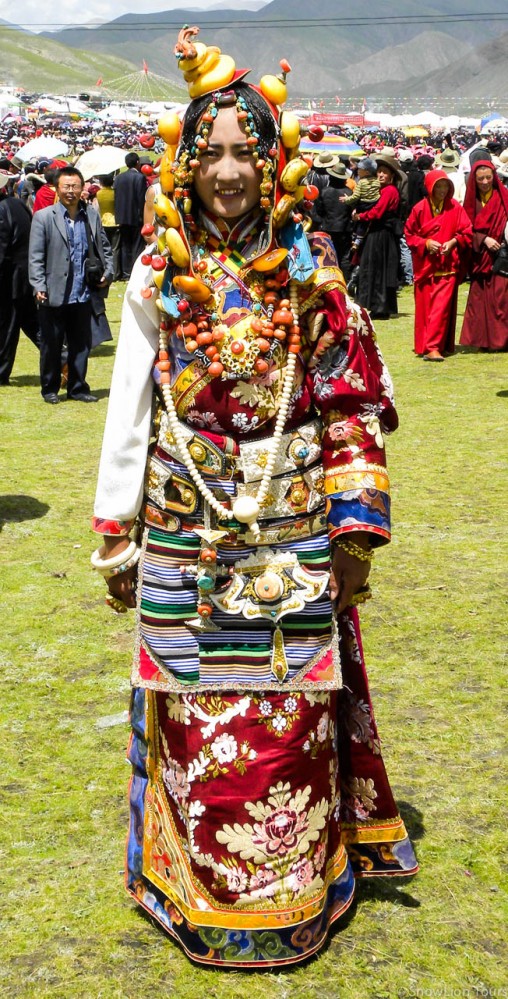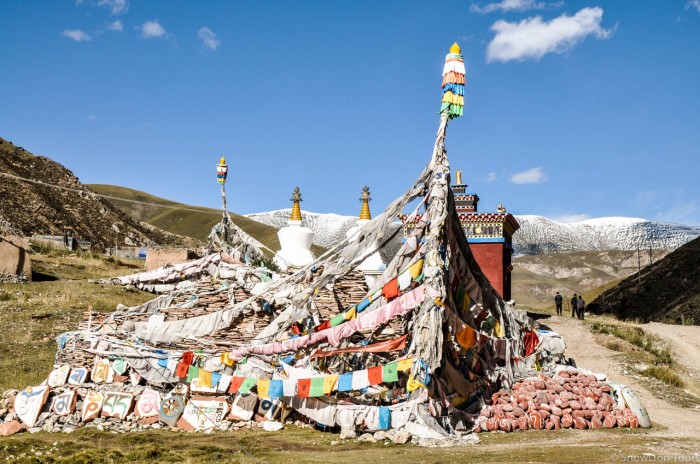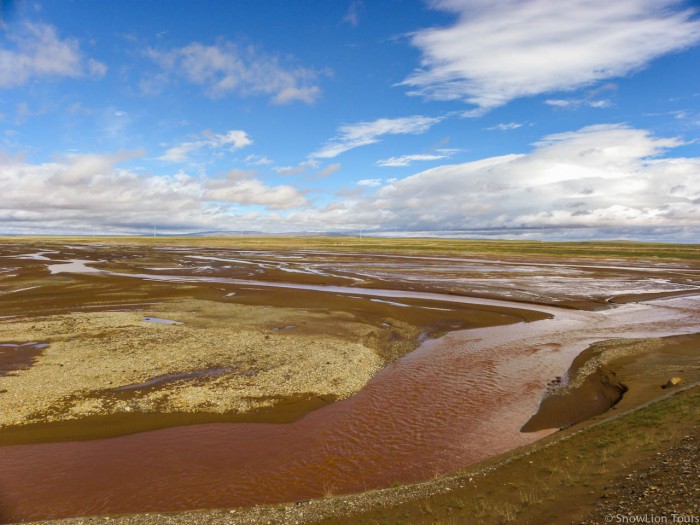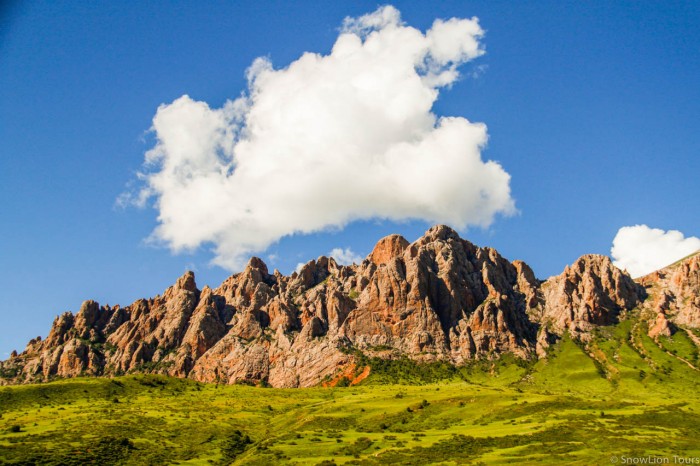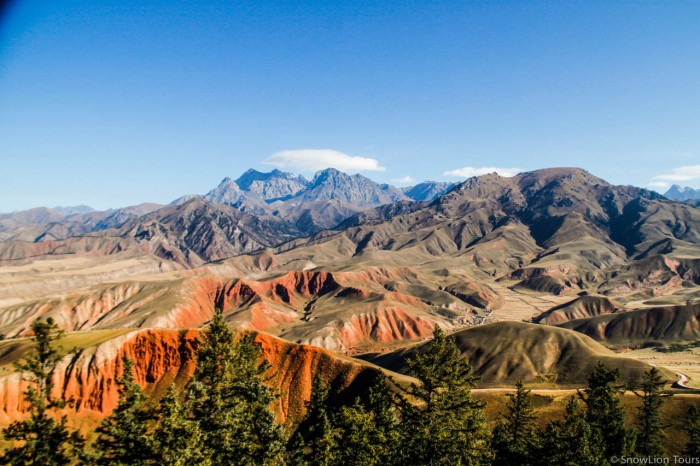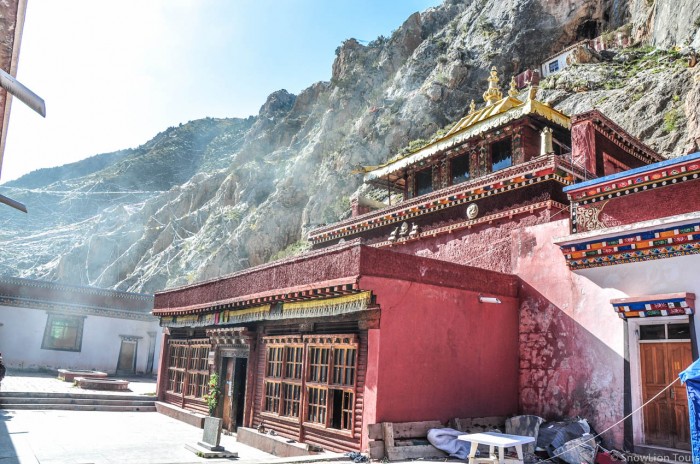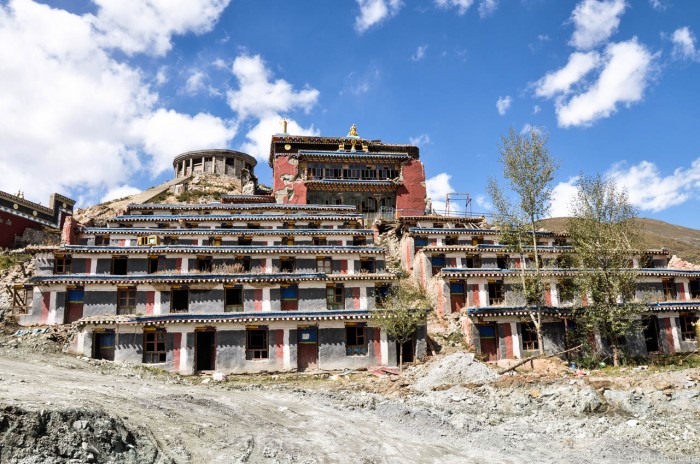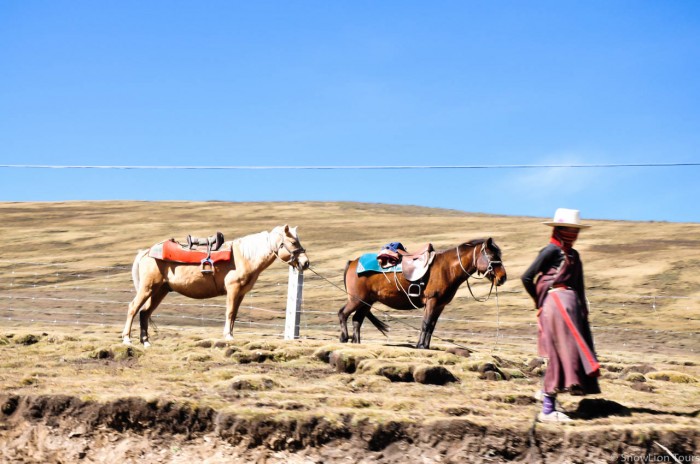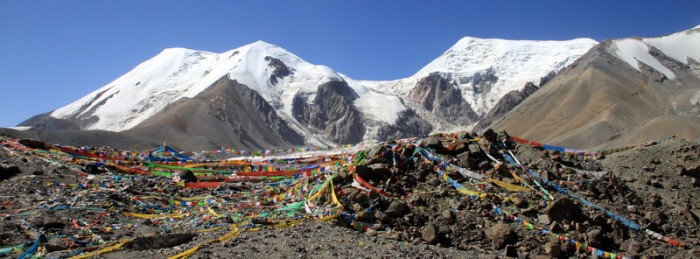Day 1: Xining sightseeing Altitude: 2270m
In the morning visit the Tibet Medical Museum which was founded by NGOs and donations from Tibetans in the region. This is the largest and most authentic Tibetan Museum in the world. The first floor exhibits cultural and medical instruments and second floor is to see the largest Thangka painting in the world. Afterwards, we will head to Kumbum Monastery (Ta’er si) which is located 27km to the southwest of Xining, the capital of Qinghai Province, Kumbum Monastery is one of the six great Gelupa monasteries in Tibet. It is the birth place of Je Tsongkapa, the founder of Gelupa sect of Tibetan Buddhism, and boasts enormous influence in both religious and secular life in Tibet. It was home for more than 1000 monks in the peak, and there are about 600 monks in the monastery today. Overnight in Xining.
Day 2: Xining – Qinghai Lake – Dredzong Monastery 3200m [296km] 5 – 6 hours
Take pictures of the blooming yellow flowers along the shores of Qinghai lake, Qinghai Lake is the largest lake in the China and largest salt lake in Asia. Qinghai Lake lays about 155km west of Xining. You can ride horse or take a short walk at the lake shore. After that, we will drive to Dredzong Monastery known as the kingdom of monkeys. a remote Buddhist monastery set on the side of a rugged mountain at over 3600m. Dredzong provides excellent hiking opportunities. Overnight in Xinghai.
Day 3: Dredzong Monastery – Jyekundo (Yushu) 3670m [580km] 7 – 8 hours
Drive to Jyekundo or Yushu prefecture, a large town populated almost entirely by Tibetans. at an elevation of 3,700 m. The town is located in the Batang River valley, surrounded by mountains. the entire area of the Yushu region is a realm of nomadic pastoralists, Jyekundo is one of the few places in this part of the vast Tibetan highlands where permanent settlement proved to provide a livelihood for Tibetan farmers and traders. Here, peasants grow barley on riverside fields. Over night in Yushu.
Day 4: Jyekundo 3670m
In the morning visit Nambar Nangzel or Wencheng Temple of Tragu monastery located 20km outside Jyekundo. The temple offers a Maha Varocaina Statue. According to the Buddhist interpretation, this statue has the equivalent blessing effects than the Buddha Sakyamuni Statue in Jokhang Temple in Lhasa. Afterwards drive back to town and visit Jyeku monastery on the hill top behind the town and Gyanak Mani Stones at the end of town. Jyeku monastery had been the site of an ancient Bon temple, before Kagyupa temples were built alongside it. Then when Dragon Phakpa passed through in the course of his travel in 1268. He consecrated the site for the construction of a Sakya tradition monastery. Today Jyeku Monastery consist with 16 temples and home to more than 500 monks. Then visit Gyana Mani Stone Pile which is the largest Mani Stone in the world, therefore, it received a Guinnes World Records. Mani stones feature carved and painted Tibetan Buddhist mantras. At the Mani Stone Pile, mountains of rocks are stacked upon each other, and carvers sell mani stones nearby if you’d like to contribute to the pile. Pilgrims come from all over to circumambulate the stones. Overnight in Yushu
Day 5: Jyekundo – Gaden monastery – Surmang Monastery – Nangchen 3660m[280km] 6-7hours
In the morning drive to Nangchen via Gaden monastery and Surmang monastery. Gaden monastery is a Geluk monastery which is built on a hilly peninsula surrounded by the Dzi River. afterwards drive along the Dzi river and visit Surmang Namgyaltse. Surmang Namgyaltse Monastery belongs to the Karma Kagyu sect of Tibetan Buddhism. It was founded in the 15th century by a disciple of the 5th Karmapa. The word “Surmang” means “many cornered” and refers to an oddly shaped meditation hut (and perhaps more than one) that was originally built at the location. Overnight in Nangchen.
Day 6: Nangchen 3660m
A day trip to Gar monastery. Gar Monastery is set in one of the most beautiful locations of any monastery in Tibet. This Drigung Kagyu sect monastery was founded in the 18th century. It is located in the Dza River valley at an elevation of around 4000m. An evergreen forest surrounds the monastery while craggy mountain peaks can be seen all around. A small lake is also located in the valley below the monastery. The area around Gar Monastery provides excellent opportunities for hiking. In the afternoon, drive back to Nangchen for overnight.
Day 7: Nangchen – Jyekundo [180km] 3- 4 hours
Easy day drive back to Jyekundo via Gyodrag monastery. Which is the second largest Kagyu monasteries in Nangchen. You can also enjoy the original Kagyu style of Architecture of the monastery in this place. You can stop for some short hikes along the way. Afterwards, drive to Jyekundo.
Day 8: Jyekundo – Motoi 4270m [350km] 6-7 hours
Drive back to Matoi, have a lunch picnic in the some of the most beautiful grassland on Tibetan Plateau. Overnight in Motoi, the highest town in Qinghai.
Day 9: Madoi – Tso Kyarang and Ngorang Lake [220km] 5 hours
Drive around 100kms to visit two sister lakes, circumambulate the temple at the source of the Yellow River and invigorate yourself by walking through thousands of colorful prayer flags. You may hike up to yak head monument on the hill top between the two lakes which has a sign of source of Yellow River. This region is one of the best place to watch wild animal such as wild donkey, wild yaks, wolf, fox .etc. In the late afternoon, return back to Matoi.
Day 10: Matoi –Amnye Machen – Xining [460km] 7 hours
In the morning drive back to Xining via Amnye Machen. The 6282m peak of Machen Kangri, or Mt Amnye Machen, is Amdo’s most sacred mountain – it’s eastern Tibet’s equivalent to Mt Kailash in western Tibet. Tibetan pilgrims travel for week to circumambulate the peak, believing it to be home to the protector deity Machen Pomra.This kora is also one of the most authentic trekking route on Tibetan Plateau. Overnight in Xining.
Day 11: Depart Xining
Say goodbye to your guide and driver. Leave Xining via plane or train.





